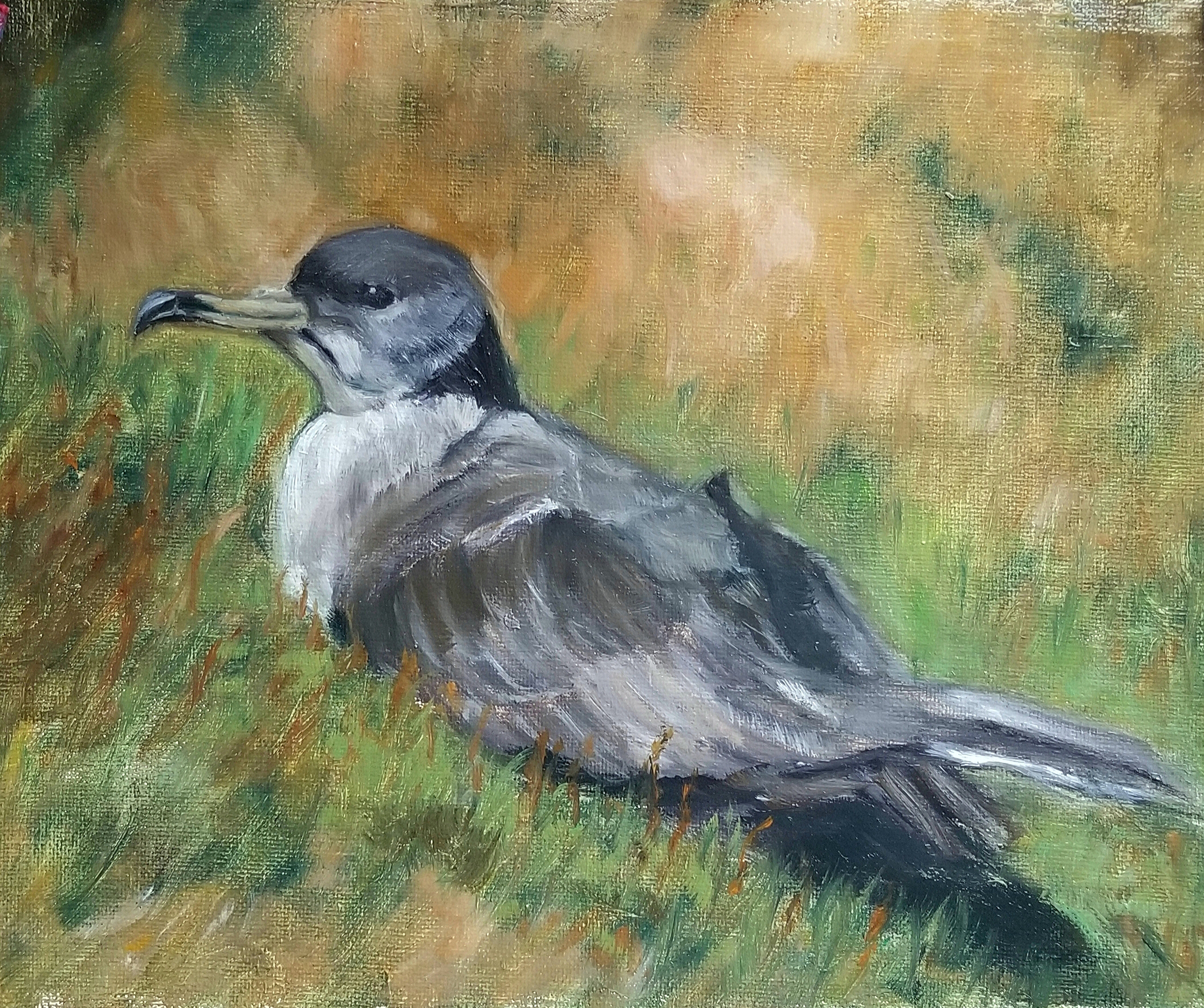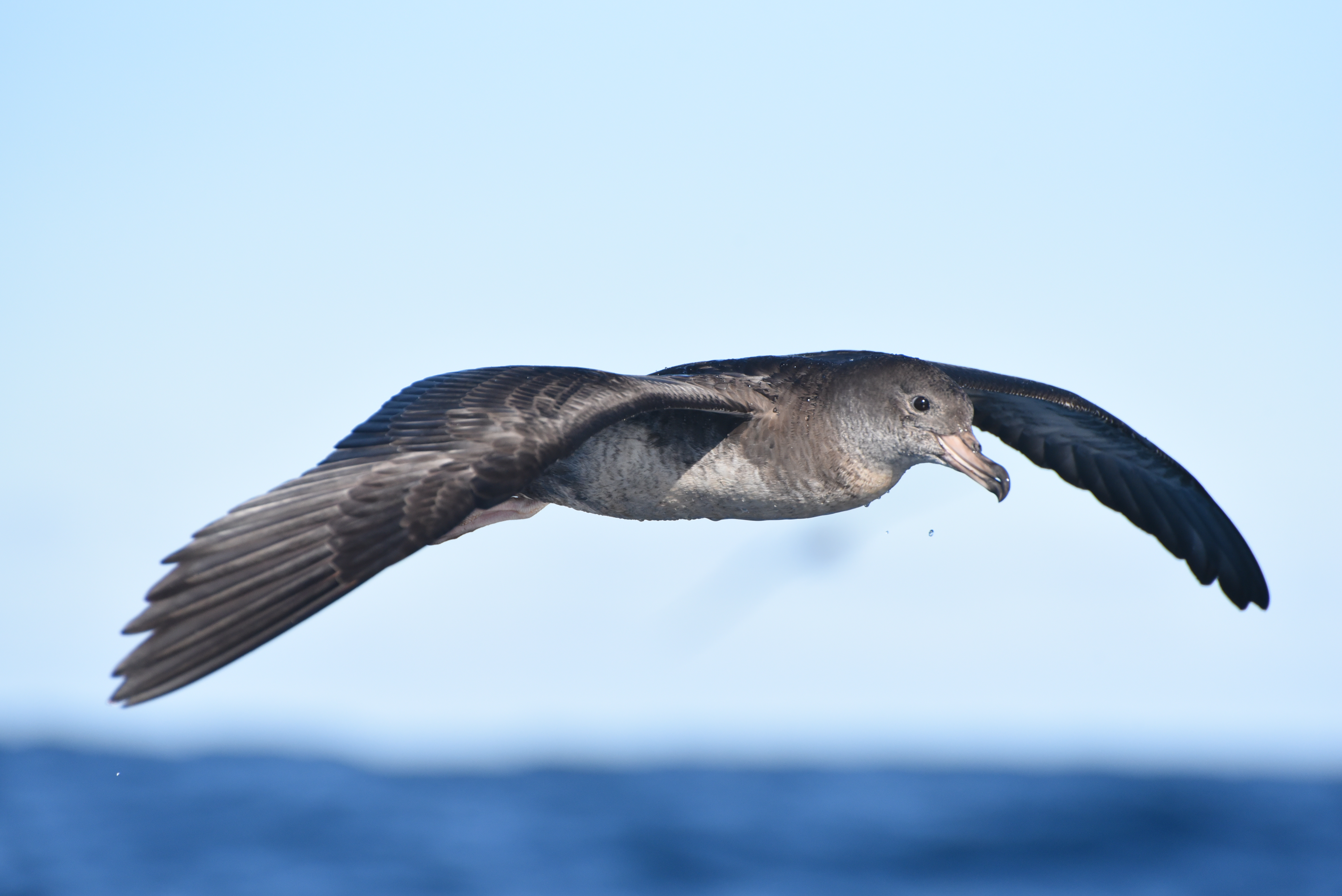
Pink-footed Shearwater by Pilan; after a photograph by Peter Hodum
Note: The illustrated Species Summaries have been written to help inform the general public, including school learners, of the biology and conservation needs of the 31 ACAP-listed species. They serve to complement the more detailed and referenced ACAP Species Assessments. To date, summaries for the 22 species of albatrosses have been produced in in all three ACAP official languages, English, French and Spanish.
Texts have also been prepared for the nine ACAP-listed petrels and shearwaters in English, but as yet have not been translated into French and Spanish. As an interim service, the illustrated English texts have been posted to ACAP Latest News, completing the series with the Pink-footed Shearwater Ardenna creatopus.
Pink-footed Shearwater at sea; photograph by Peter Hodum
The Pink-footed Shearwater is one of two shearwaters listed within the Albatross and Petrel Agreement (ACAP). As for most members of the petrel family Procellariidae it breeds in burrows. The bird is greyish brown with a white breast and belly and mainly white underwings. The feet and legs are a distinctive pale pink, the bill yellowish with a dark tip.
The Pink-footed Shearwater has been confirmed to breed on only three islands off the coast of Chile: Islas Robinson Crusoe (52 km²) and Santa Clara (2.2 km²) in the Juan Fernández Archipelago and Isla Mocha (50 km²), farther north. There are around roughly 28 000 - 30 000 breeding pairs in total, implying as many as 100 000 individuals when juveniles and non-breeding birds are included. Isla Mocha supports over two thirds of the species’ breeding population. Overall, the shearwater may have a stable population with trends on the three islands differing between them.
The species breeds colonially, laying single eggs in burrows during the austral summer on slopes in both forested and deforested grassy areas. It is a trans-equatorial migrant, some satellite-tracked individuals have been recorded travelling outside the breeding season as far north as the Pacific waters of British Columbia, Canada and the Gulf of Alaska, staying in the main close to coastlines over the continental shelf. Diet is dominated by small pelagic shoaling fish (sardines and anchovies) along with squid and crustaceans caught by surface seizing and diving.
The shearwater faces threats both on land and on sea. On its breeding islands deforestation and ensuing erosion have reduced breeding site quality and introduced mammals have either reduced vegetation cover and trampling leading to burrow collapse and erosion on steep slopes (domestic cattle, goats, European Rabbits) or preyed upon birds (feral cats, domestic dogs, Coatimundis and possibly rats). An illegal take of chicks for human consumption continues on Isla Mocha – which can include destroying burrows. At sea it is at risk from bycatch, including by artisanal net and longline fisheries off the coast of Ecuador and Peru and a domestic trawl fishery off Chile. Conservation efforts include erecting an introduced mammal-proof fence around a breeding site on Isla Robinson Crusoe and educating the islands’ inhabitants. Rabbits have been eradicated on Isla Santa Clara leading to an increase in shearwater breeding numbers. The Juan Fernández Archipelago is both a national park and a UNESCO Biosphere Reserve. The breeding site on Isla Mocha falls within a national reserve, patrolled to deter poaching of chicks. The 93-km² Juan Fernández Archipelago National Park was placed on Chile’s Tentative List for nomination as a World Heritage natural site in 1994.The Pink-footed Shearwater is listed both within ACAP since 2015 and in the Convention on Migratory Species on Appendix I. Both national and international management plans exist for the species, which has been categorized with a global status of Vulnerable due to its small breeding range on only three islands and the threats described above.
Sources:
ACAP 2013. Pink-footed Shearwater Ardenna creatopus. AC7 Doc 24 Rev 1.
BirdLife International 2021. Species factsheet: Ardenna creatopus.
John Cooper, ACAP Information Officer, 14 April 2022

 English
English  Français
Français  Español
Español 